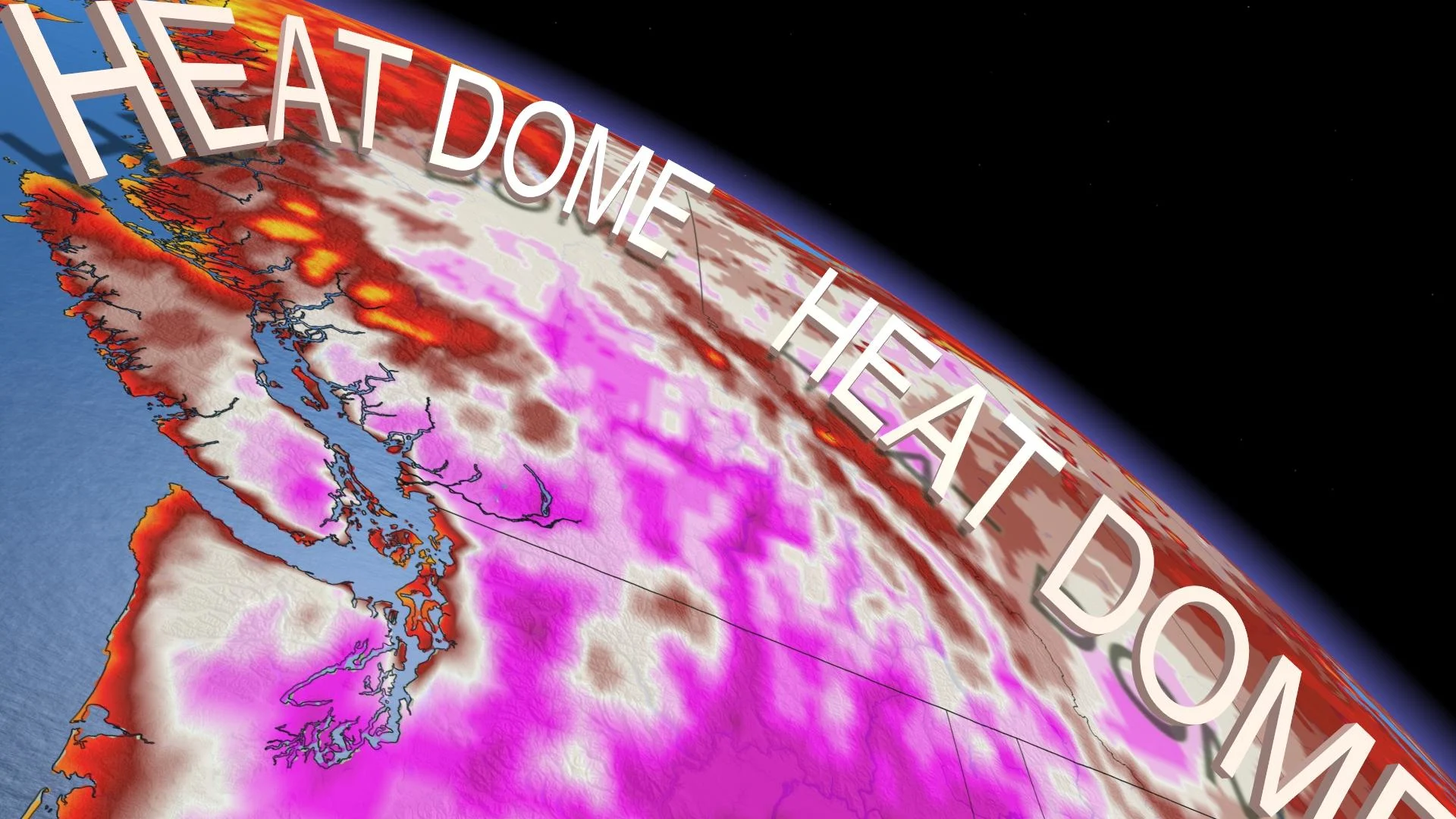
Heat dome inflates over Western Canada, the harbinger of all-time warmth?
This feature will be particularly perilous because it's so rare in this part of the world. Sixty per cent of British Columbians do not own an air conditioner in their households.
--
Editor's note: This article is no longer be updated. Click here for the latest on the potential life-threatening heat wave impacting Western Canada.
A heat dome usually camps in the Four Corners section of the southwestern United States; instead, it will bubble up directly over British Columbia by Saturday -- extending into the northern territories and Alberta.
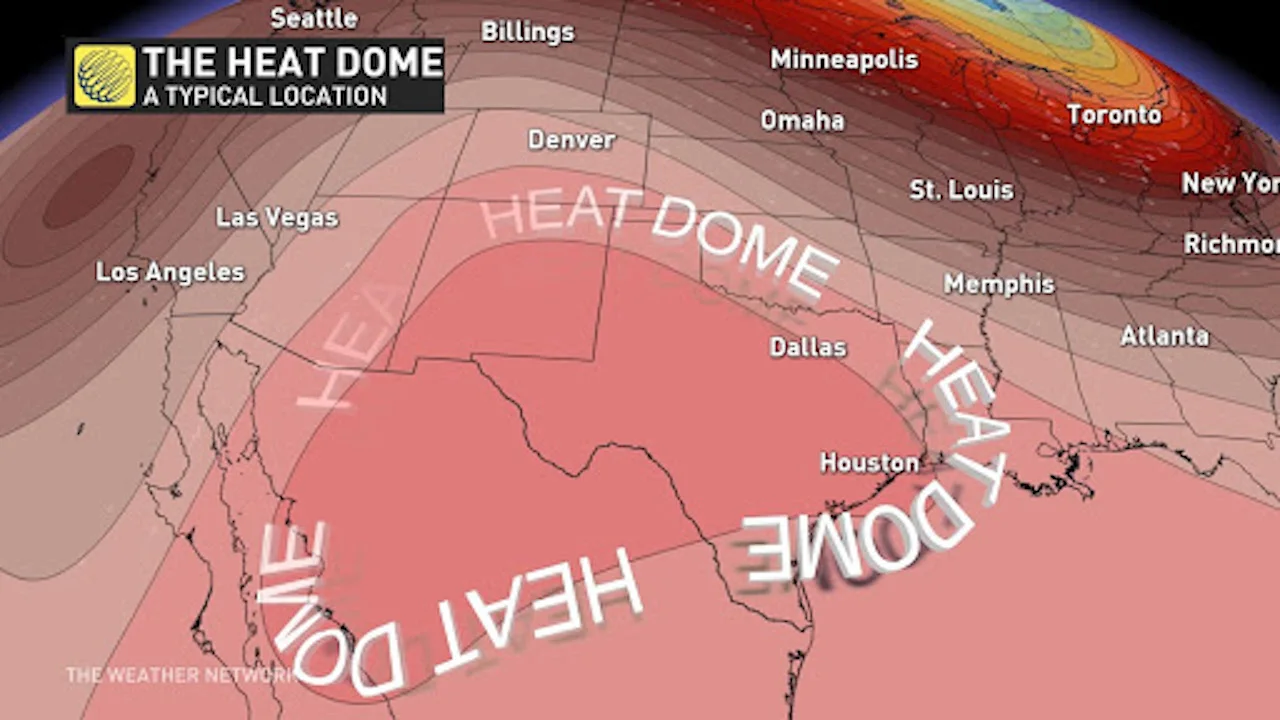
This feature will be particularly perilous because it's so rare in this part of the world. Sixty per cent of British Columbians do not own an air conditioner in their households.
A heat dome is colloquially known as an intense high-pressure system that features descending air that compresses and warms to record levels at the surface.
These features tend to be cloudless, as well; this setup is an excellent inhibitor for vertical motion that produces clouds in the atmosphere. Heat domes often sniff out regions in drought, and as the old saying goes, drought breeds drought.
Then you get a feedback effect. The warm air gets trapped in the lower elevations, and temperatures can only fall into the 20s at night. The following days can be incrementally toastier.
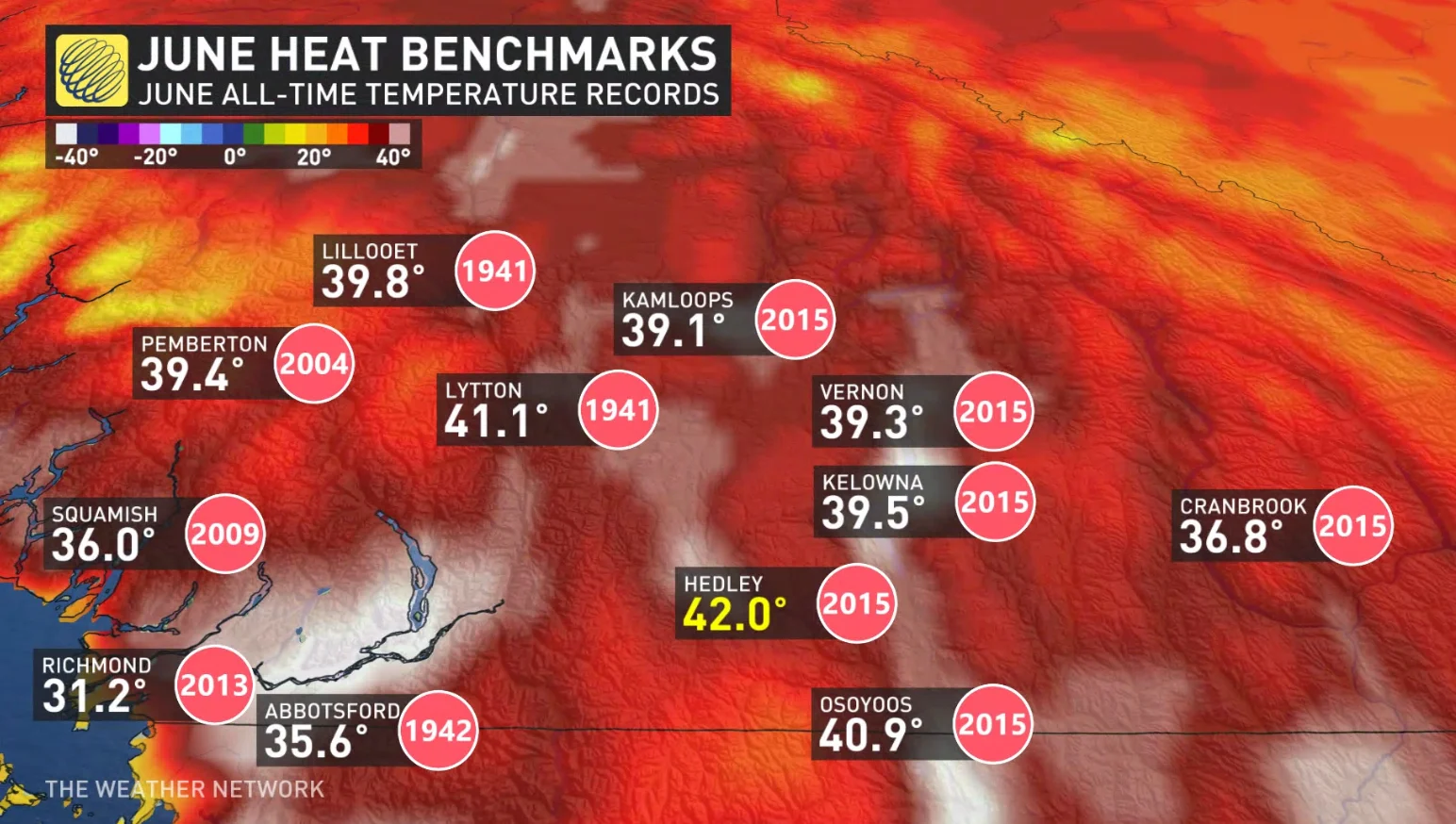
These are the antecedent conditions that can cause all-time heat records to crumble.
RELATED: Prevent wildires - How to properly put out a campfire
FRIDAY
After building off the Pacific, the core of the heat dome is over Vancouver Island, but the warmest temperatures will lag.
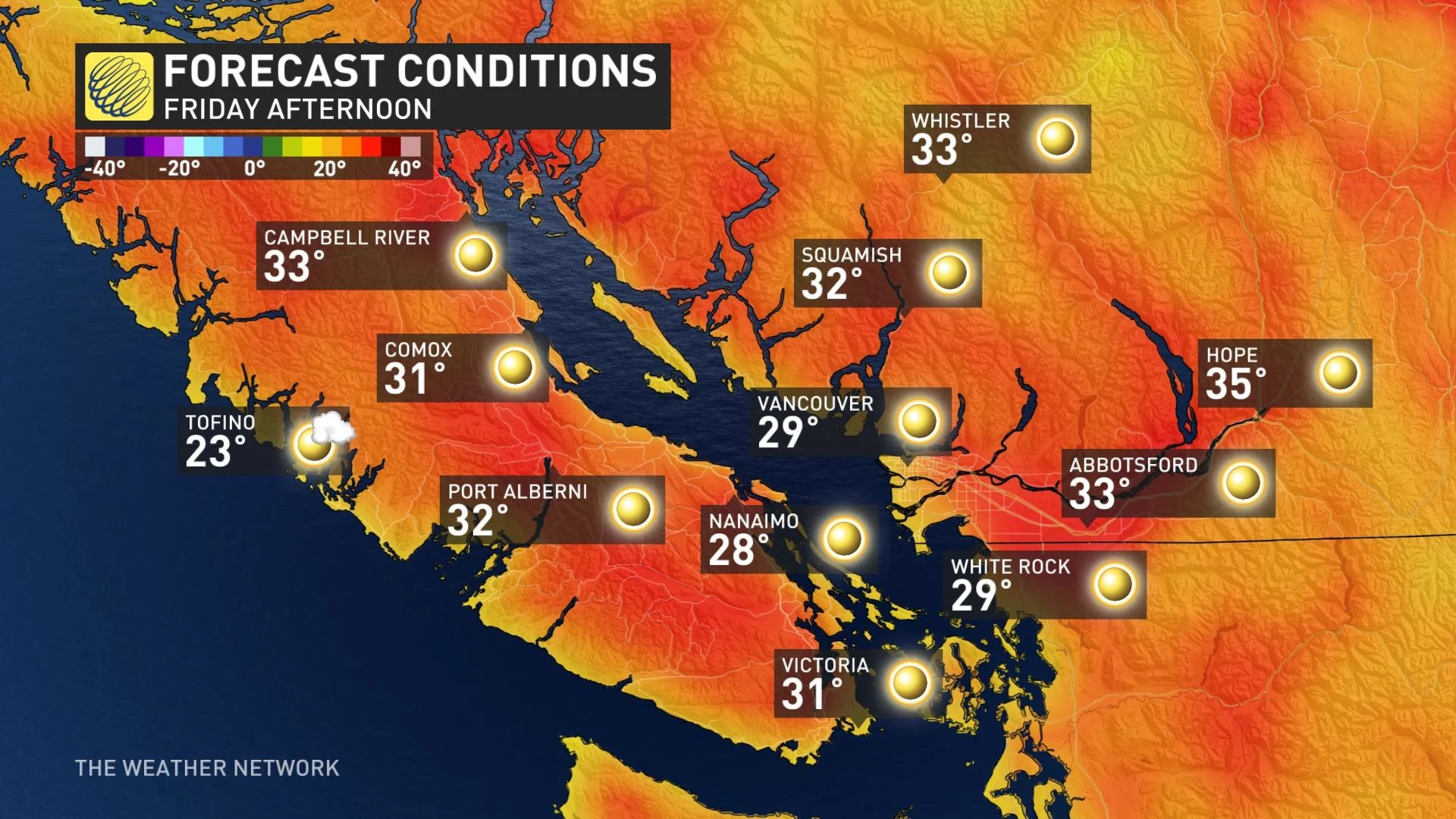
Temperatures across the South Coast, away from the water, spill into the low 30s, with pockets of mid-30s speckled across the southern Interior.
Muggy along the coast with dew points visiting the upper teens, making it feel in the upper 30s.
SATURDAY
The core of the heat dome is over the South Coast and southern B.C.
Temperatures push into the mid-30s across inland sections of the South coast, with even the occasional upper-30 reading in Port Alberni, Abbotsford, and throughout the southern Interior.
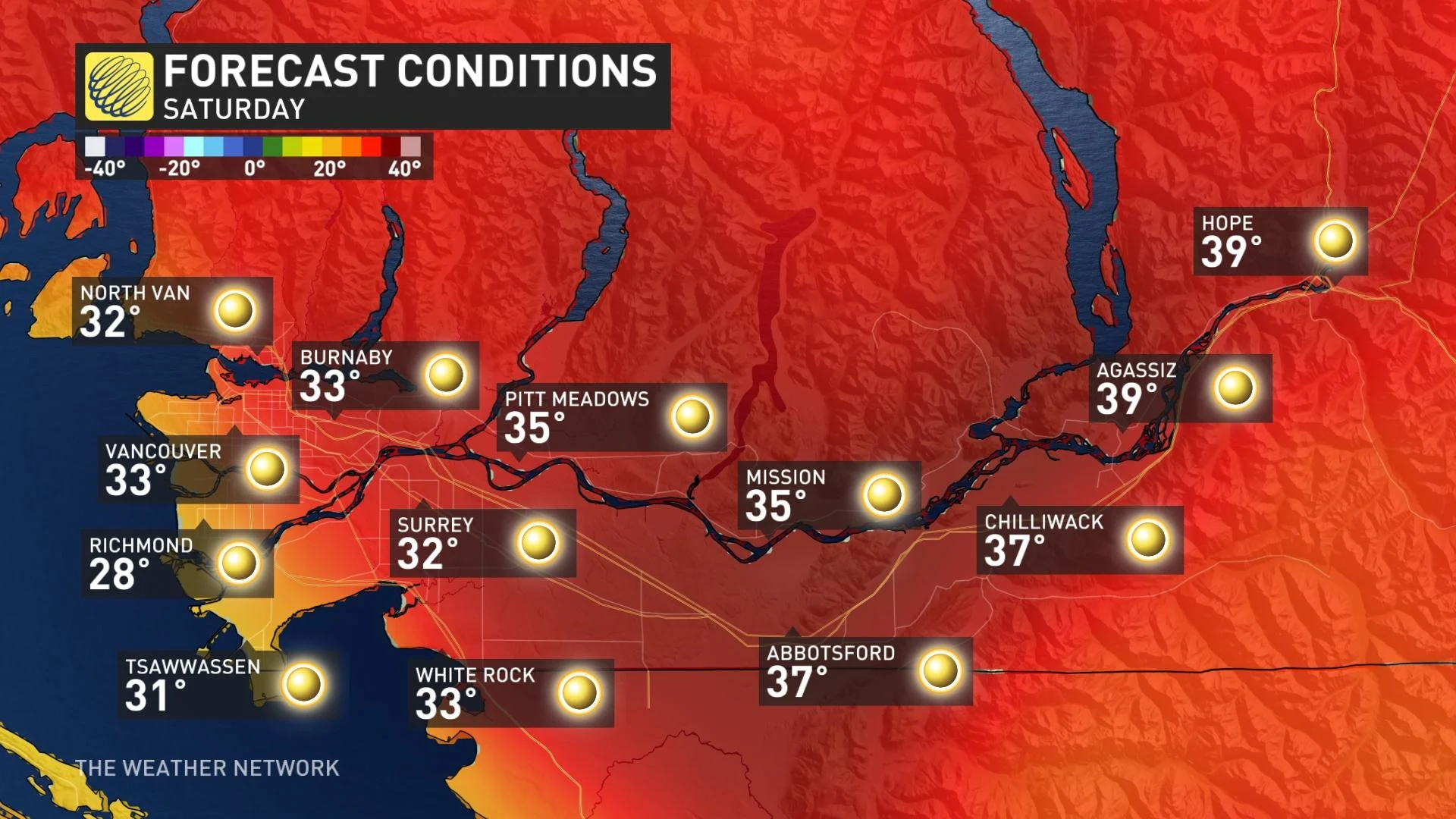
SUNDAY/MONDAY
Potentially the warmest day in history for some cities in the B.C.
Record-maximum overnight lows, record daytime highs, record humidex values – it's all converging towards an extreme weather event. The ridge has surged so far north that some locations in the N.W.T. have the chance to reach the upper 30s for daytime highs near the Alberta border.
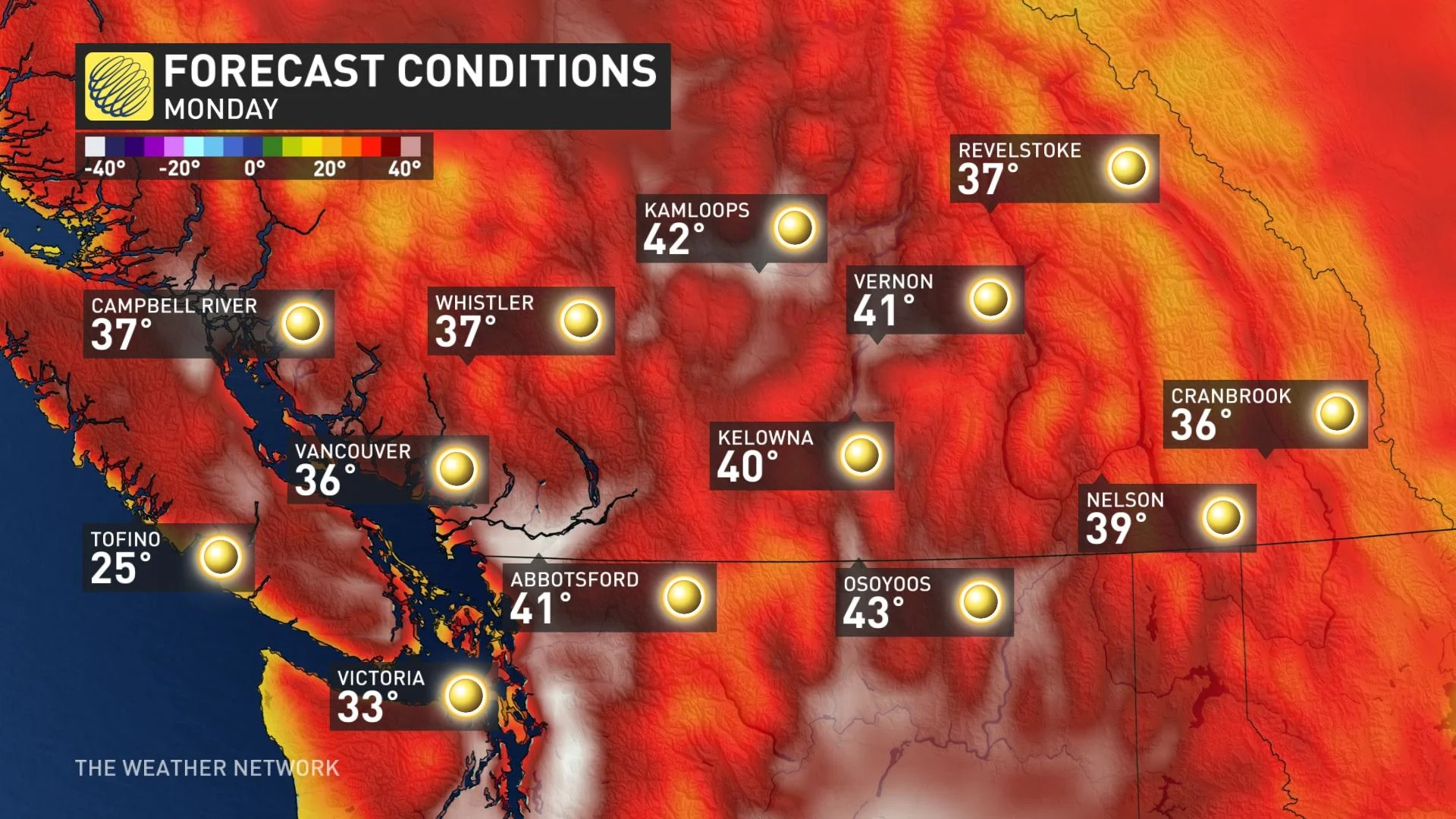
Temperatures in the Interior can soar well into the low 40s for daytime highs. The warmest temperature recorded in June will probably fall -- a whopping 42°C in Hedley during a 2015 heat wave in the province.
A thermal trough, a thin, weak area of low pressure, tends to develop along the coast during these heat events, enhancing the offshore flow and allowing the air to further warm as it snakes down from the coastal mountains.
WATCH BELOW: THIS PART OF B.C. WILL BE HOTTER THAN THE REST
Sunday morning and Monday morning will be warmer than the average daytime high for the end of June - bottoming out as high as 23°C, or even 24°C for some.
For some relief, head down to the Pacific Ocean, but it remains to be seen if the daytime sea-breeze will push very far inland, at all. Your best bet is to be directly in the ocean, or somehow find your way to Prince Rupert.

NEXT WEEK
It's looking likely that the dangerous heat wave will spill into early next week. The heat will also spread into Alberta and Saskatchewan, with daytime temperatures pushing the mid-to-upper 30s by Tuesday.
HOW B.C. RESIDENTS ARE GOING TO 'BEAT THE HEAT' AND STAY SAFE
HEALTH IMPACTS
The extreme heat should be taken seriously as it could harm your health and cause heat related-illnesses.
“Heat-related illness is the result of your body gaining heat faster than it can cool itself down,” explains HealthLink BC. “Those at increased risk for heat-related illness include: infants and children, people 65 years of age or older, and people who do a lot of physical activity or work in a hot environment. In most cases, heat-related illnesses are preventable.”
Heat stroke is a life-threatening medical emergency. Call 9-1-1 or other emergency medical services as soon as you suspect or see the signs of heat stroke in an individual. Click here to learn more about heat stroke.
Heat stroke shares some symptoms with heat exhaustion, but the most acute to watch out for (according to Canadian Centre for Occupational Health and Safety) are:
Hot, dry skin or profuse sweating
Confusion
Loss of consciousness
Seizures
Very high body temperature
Heat stroke can follow on from untreated heat exhaustion, or can happen without little or no warning. To learn more about how extreme heat can impact the human body, click here.

HUMAN-CAUSED FIRES A BIG CONCERN
The heat also ignites fears of human-caused wildfires. Residents are urged to exercise caution when outdoors. There are numerous ways human activity can start wildfires, some of which include open burning, the use of engines or vehicles, dropping burning substances such as cigarettes, or any number of other human-related activities that can create a spark or a heat source sufficient to ignite a wildfire. The most important factor of person-caused fires is that they are preventable.
Residents are also reminded to check with local authorities before lighting a fire of any size.
ADDITIONAL SAFETY MEASURES IN VANCOUVER
The City of Vancouver has implemented additional measures to protect residents facing compounded challenges of COVID-19 and the heat. Some of which include:
Community centres in the Downtown Eastside will offer water to patrons requesting it or in need of hydration, as well as supporting patrons with sun block. If you are out and about, you can fill up your water bottle at one of over 200 drinking fountains.
The City’s Non-Market Housing Operations is implementing a hot weather support plan for tenants, which includes increased wellness checks, and provision of bottled water and table-top fans for those residents not able or wanting to leave their rooms. Additionally, air-conditioned common area spaces will be available for residents to seek respite from the heat. Residents can find a list of the City’s 10 air-conditioned community centres and all library locations have air-conditioning at vancouver.ca/hot-weather.
Sharing heat safety messaging with operators of many of Vancouver’s SROs and requesting that they check on residents who are vulnerable to heat.
Emergency service personnel and volunteers will be vigilant for people who may be suffering from or are at risk of heat exposure.
The city will be providing additional information via Vancouver.ca to ensure people are aware of heat warnings and can access the information they need.
Be sure to check back as we continue to monitor this potentially life-threatening heat wave.
With files from The Weather Network digital writers.
